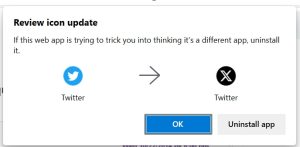eCommerce wholesale websites, both mobile and desktop, are changing the wholesale landscape. B2B sales have already outpaced B2C sales by almost double, and wholesalers are quickly implementing eCommerce platforms to suit their clients’ needs. As B2B eCommerce continues to grow, the presence of uniquely B2B-focused features will become a key competitive differentiator.
In this article, we’re going to look at five key ways that wholesalers are ensuring that their eCommerce platforms are tailored for B2B transactions, and the infrastructure that underlies them. We’ll also take a look at how additional customer-centric features can increase the revenue-generating potential of established customers along with new ones.
How eCommerce Wholesale Platforms are Improving Customer Experiences
1. Hiring of B2B eCommerce talent
eWith the speedy shift towards a data-driven, flexible sales infrastructure that relies heavily on customer-focused features and digital processes, a significant talent gap has arisen. Whilst there are broader hiring challenges in the technology industry as a whole, it’s a phenomenon that is particularly evident in the B2B eCommerce sphere.
The issue lies in the fact that running an eCommerce platform is not a core area of expertise for many wholesalers. Also important to note is that many of the traditional departments responsible for sales and marketing aren’t well-suited to meet the new demands of B2B digital platforms.
Taking advantage of third party SaaS B2B eCommerce software vendors has helped to alleviate this problem, but many manufacturers and distributors are still in need of some in-house technical talent to manage and administer their portals. Likewise, they also require digital marketing expertise to take full advantage of the marketing opportunities presented by B2B eCommerce.
2. Emphasis on mobile-ready eCommerce wholesale platforms
According to research firm Digi-Capital, M-Commerce (mobile eCommerce) is set to hit $ 700 billion by 2017. This shift has been fuelled by a fast-growing number of consumers that have grown more comfortable making purchases on their smartphones and tablets.
The real challenge with M-Commerce lies in understanding the particular type of buying experience that mobile users require. Whilst data has shown that many B2B buyers are happy to make purchases through a handheld device, desktop portals are still the preferred method for making large orders, and account for the bulk of B2B eCommerce revenue. This highlights the need for wholesalers to create much better user experiences for buyers on mobile.
Things like mobile payments, barcode scanning and push notifications have also given wholesalers new opportunities to further streamline the mobile ordering experience.
3. Reliance on big data for customer-centricity
One of the biggest opportunities for wholesalers relates to the large amounts of data available via eCommerce platforms. For instance, using user data, manufacturers and distributors can work to “seal up” drop-off points in the checkout process through methods like split-testing and tracking. Feedback forms and questionnaires integrated into the buying sequence can also provide insights into customer needs and behavior.
4. Simplification of complex tasks
One of the key differences between B2B and B2C eCommerce is the level of complexity involved in the ordering process, particularly when large amounts of stock are involved. Customers should be able to simply and, in certain cases, automatically access quantity discounts, special offers and tailored pricing structures as part of a fluid buying process. Manufacturers and distributors are finding that a commitment to simplifying these processes can pay large dividends in the longer-term.
In a similar vein, eCommerce lends itself particularly well to the implementation of a flexible and streamlined checkout process. Portals can be integrated, for example, with back-end order approval workflows, whilst customers can be given greater choice over options related to shipping, payment and spending thresholds.
5. Marketing integration
New email and marketing automation technologies are allowing manufacturers and distributors to test marketing initiatives with certain sections of their customer base whilst also providing the opportunity to craft segment-specific offers and discounts. The fact that buyers can click through from an email to immediately take advantage of a special offer or product discount is providing greater opportunities for wholesalers to test the efficacy of their marketing efforts.
What are your thoughts on the ways that manufacturers and distributors are using eCommerce platforms? Let us know in the comments section below!
Digital & Social Articles on Business 2 Community(49)



